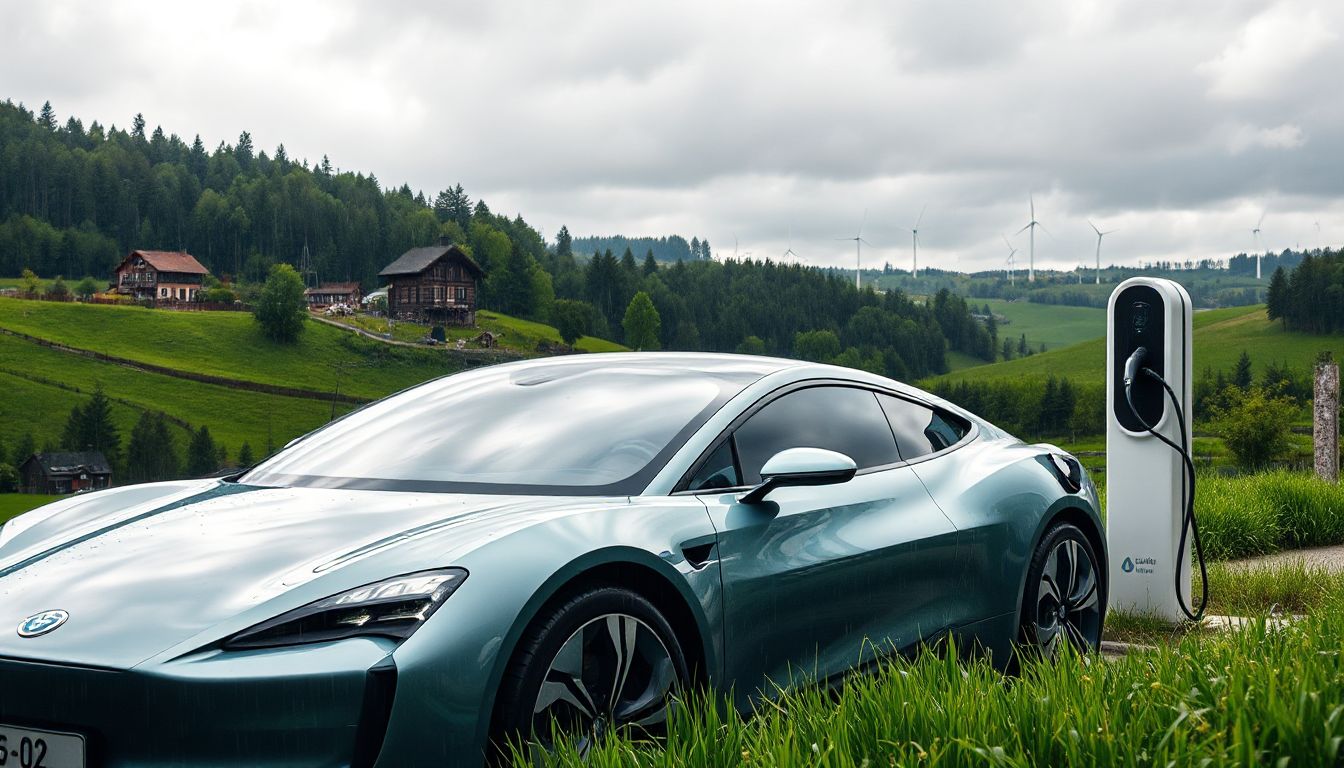Introduction
Germany is quickly becoming a leader in electric vehicle (EV) adoption. With a goal to reduce emissions, more Germans are choosing EVs for daily driving. But not all weather is friendly to these new cars. Cold winters, rainy seasons, snow, and changing temperatures can all affect how well EVs perform. Understanding these weather challenges is key to keeping your EV running smoothly. It’s not just about charging; weather plays a big role in battery life, safety, and driving experience. This article dives into how Germany’s diverse climate influences EV use and what you can do to stay ahead.
Understanding Germany’s Climate and Weather Patterns
Climate overview of Germany
Germany’s climate is as varied as its landscape. The north tends to be milder with more rain and wind, while the south experiences hotter summers and colder winters. The east often faces cold snaps in winter, with snow shutting down roads temporarily. The west gets plenty of rain, especially in fall and winter, leading to slick roads. Overall, Germany sees four distinct seasons, each bringing unique challenges for EV drivers.
Impact of seasonal changes on EV operation
As seasons change, so do the demands on EV batteries. Cold weather slows chemical reactions inside the battery, decreasing range. Hot summers can cause batteries to overheat, risking damage or safety issues. Humidity, rain, and snow add extra layers of complexity by affecting vehicle electronics and traction. Understanding how each season impacts your EV helps you plan better and keep safe on the road.
How Weather Affects Electric Vehicle Battery Performance
Cold weather impact on battery life and range
In winter, batteries lose efficiency because low temperatures slow down the chemical reactions that generate power. Studies show that in Germany’s coldest months, EV range can drop by 20-40%. That means a car that normally goes 200 miles might only go 120-160 miles in winter. Warm batteries before leaving can help reduce this hit, but the cold still takes a toll.
Hot weather effects on batteries
High summer temperatures aren’t friendly either. Overheating can cause batteries to degrade faster or even pose safety risks. Thermal management systems—like liquid cooling—are essential to keep batteries running safe and efficient. Regular maintenance, like checking coolant levels, helps prevent overheating and extends their lifespan.
Humidity and rain considerations
Rain and high humidity add more worries. Water ingress can damage sensitive electronics if vehicles aren’t properly sealed. That’s why many EVs now feature advanced water-resistant designs. When it’s pouring, slow down and avoid exposing charging ports to water to prevent electrical trouble.
Driving in Germany’s Winter Conditions with an EV
Challenges of winter driving
Snow and ice create slippery roads that make traction and stopping more difficult. Cold temperatures also reduce driving range, sometimes by half. Sudden black ice can catch even experienced drivers off guard. Planning is essential to avoid getting stranded.
Expert recommendations for winter EV use
Preconditioning your EV’s battery—warming it up before a trip—can make a big difference. Also, fit your vehicle with winter tires and keep them properly inflated. These simple steps improve grip and extend range. Using heated seats and steering wheels instead of the whole cabin conserves energy too.
Practical tips for winter travel
Before heading out, plan your route around known charging stations. Apps help find nearby chargers. Keep emergency supplies—like blankets, water, and a charger cable—in the car. Shorter trips tend to be safer, and charging overnight at home gives you a full battery before winter journeys.
Charging Infrastructure and Weather-Related Challenges
Accessibility of charging stations in adverse weather
Severe snow, ice, or rain can block access to charging points. Sometimes, snow covers up the station or makes driving unsafe. It’s best to clear your path or pick stations that are well-maintained and accessible.
Maintenance and durability of charging stations
Germany has invested heavily in weatherproofing its charging network. Many stations have heated enclosures or are built at heights to prevent snow blockage. Some initiatives include heated sidewalks and insulated charging points to keep services working in harsh weather.
Real-World Case Studies and Data
- During Germany’s winter of 2022, EV ranges dropped an average of 25% compared to summer. This was consistent across several brands.
- Drivers in snow-prone areas reported needing to plan longer charging stops. Some found that preheating their vehicle’s battery helped preserve range.
- German automakers like Volkswagen and BMW include thermal management tech that boosts winter performance. Their data shows improved reliability and safety during colder months.
Actionable Tips for German EV Owners
- Always precondition your battery before leaving on a cold day.
- Use winter tires and maintain proper tire pressure to improve traction.
- Schedule charging when weather is mild or indoors if possible.
- Keep an emergency kit with warm clothing, snacks, and a portable charger.
- Regularly check and maintain thermal systems to prevent overheating or freezing.
- Use weather forecasts to plan trips, especially during storms or heavy rain.
Conclusion
Germany’s weather influences EV performance more than many think. Cold winters can cut driving range, while hot summers pose safety risks. But thanks to new technology, better infrastructure, and smart owner habits, EVs are more prepared than ever. By understanding the climate and following simple tips, you can keep your EV running smoothly all year round. The future of electric driving in Germany looks bright—weather challenges included—especially with continued innovations in tech and infrastructure. Staying informed makes all the difference on the road ahead.




